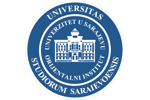Education in Bosnia-Herzegovina During the Tanzimat Period
Abstract
The Ottoman State was the scene for a number of reforms betvveen 1839-1876 known as the Tanzimat Period. The reforms during this period were different from its successors in that they were carried out in every field. Education was among the first field in which reforms were made. The governors of the Tanzimat Period established many new schools with the European affect. The medresses vvhich used traditional methods of education and the newly established schools functioned successively. One of the States where the education movement was made, was Bosnia-Herzegovina. The Bosnians acted very tentatively about education. The Bosnians who were aware of the importance of education forced the Ottoman State continuously to establish new education facilities. The centre (porte) accepted these wishes with understandding, and supported the establishment of schools in the region. It supplied teachers. Especially with the application of Tanzimat Reforms in the region,
the schools in which Müslim and Christian children can be educated increased rapidly. By the year 1875 the number of schools in the region was 1.500, and of students was 43.000. The Bosnian Muslims sent their children to schools as far as possible and educated group in Bosnia-Herzegovina. This situation did not alter during the Australian conquest and during the Yugoslavian government.



